ALEXANDER CALDER (1898-1976)
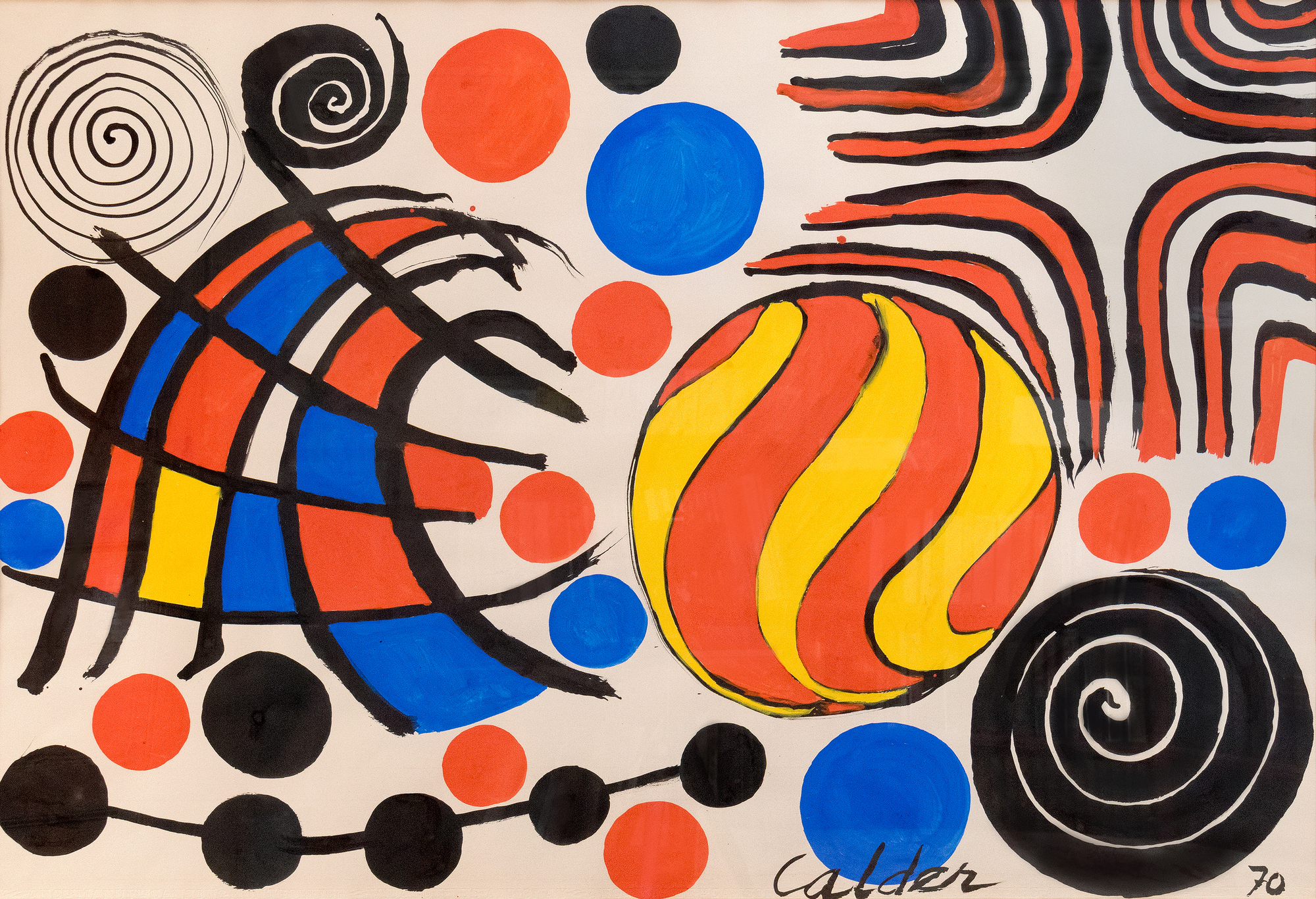
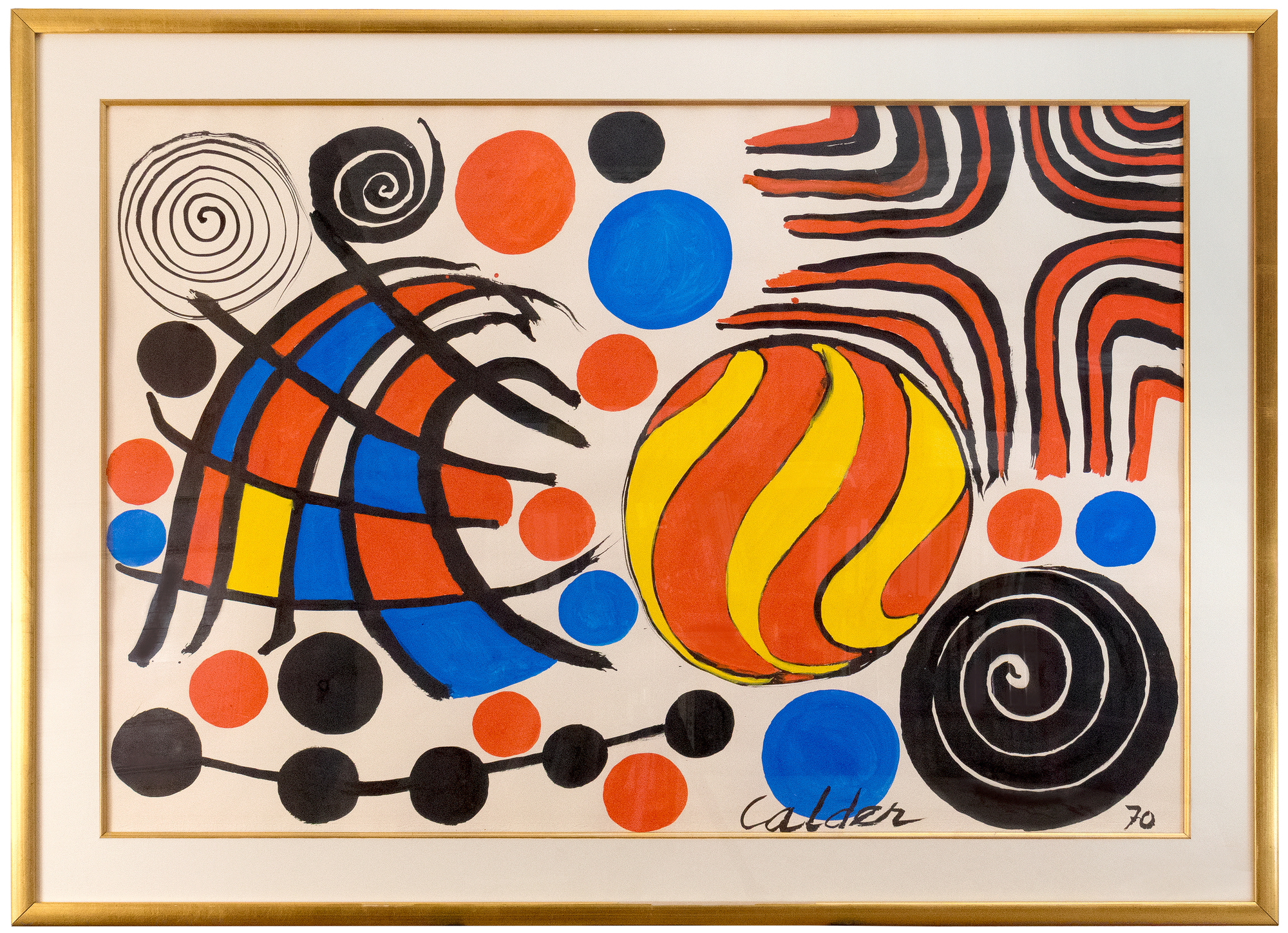
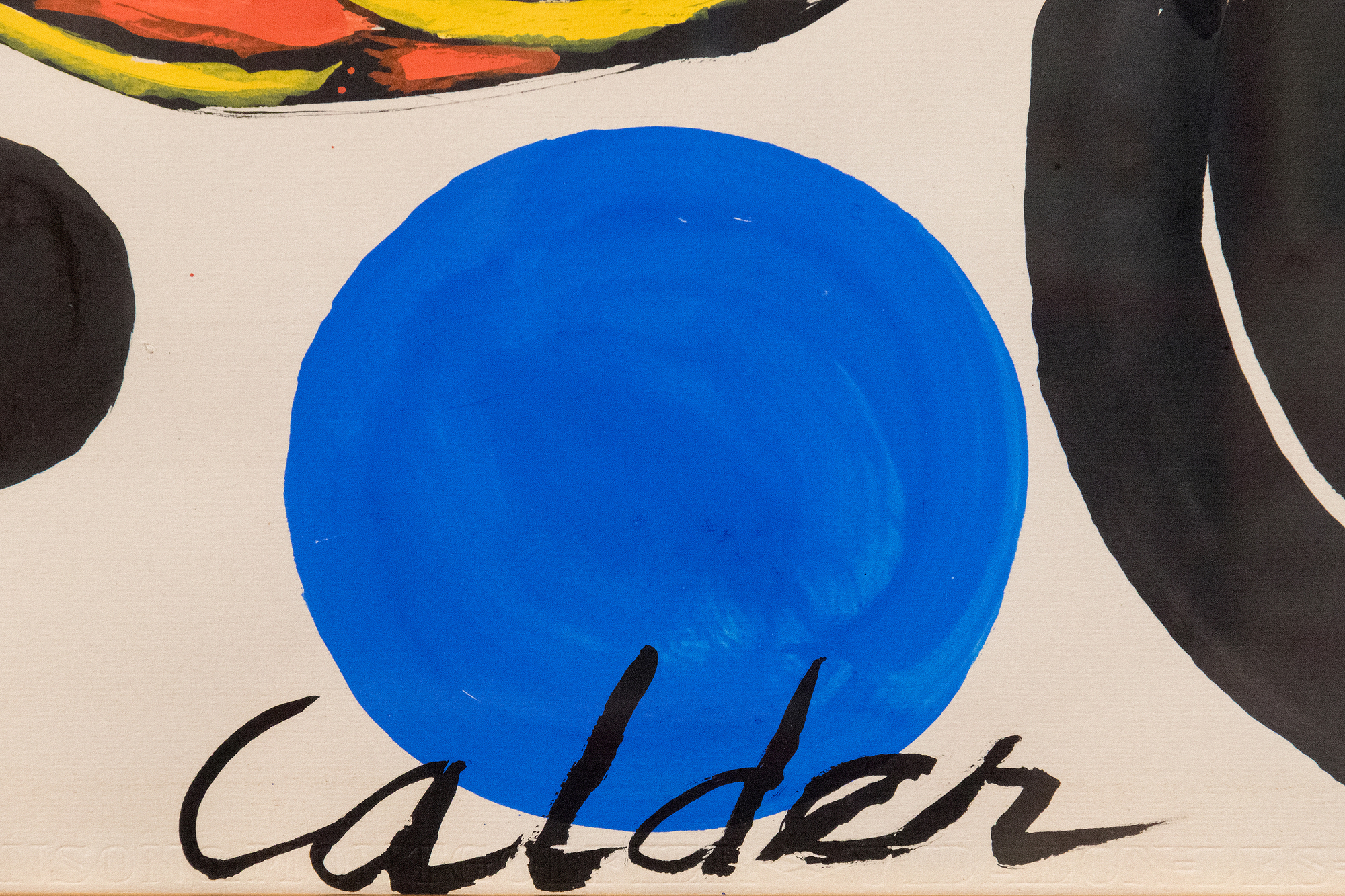
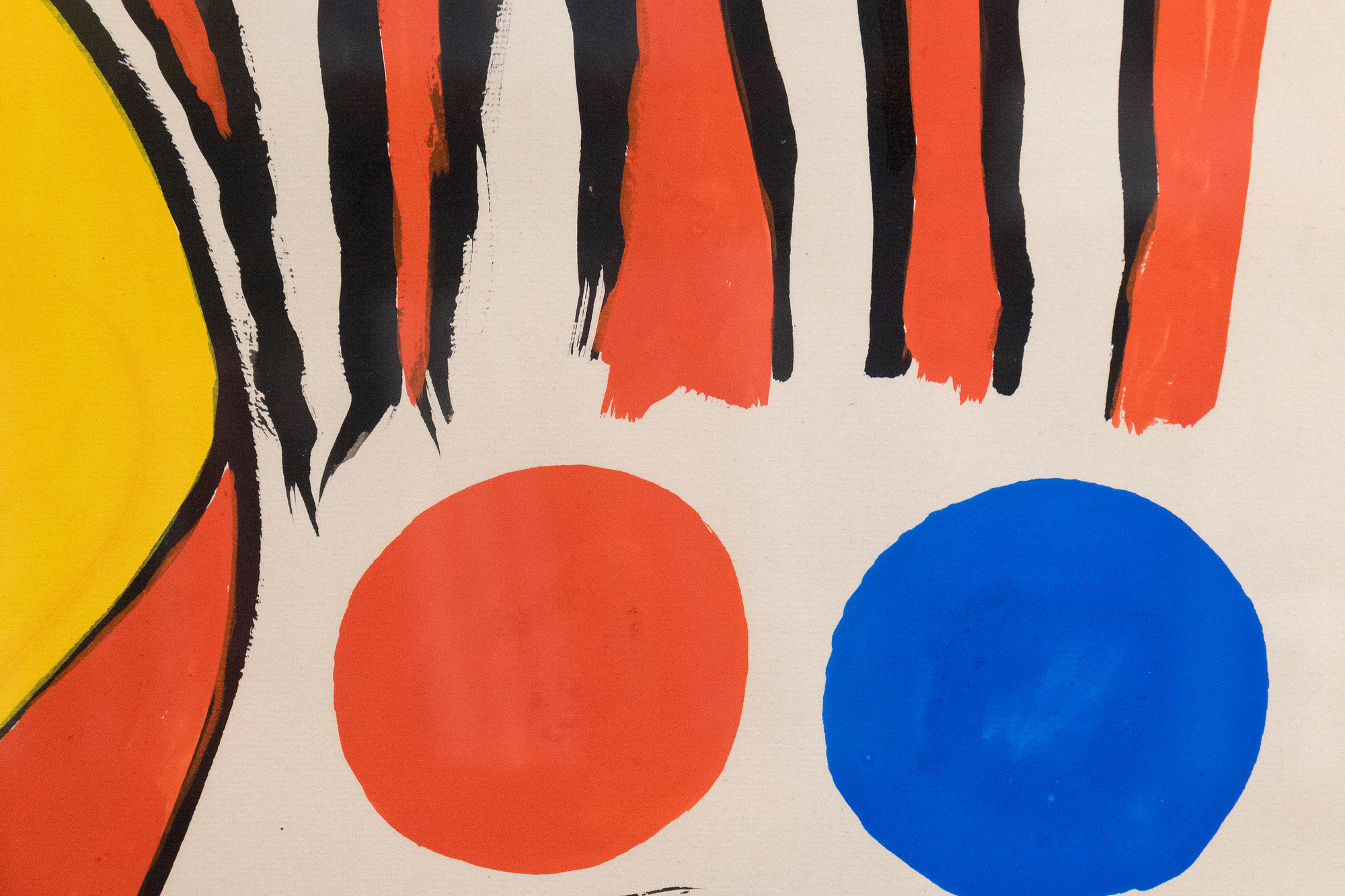
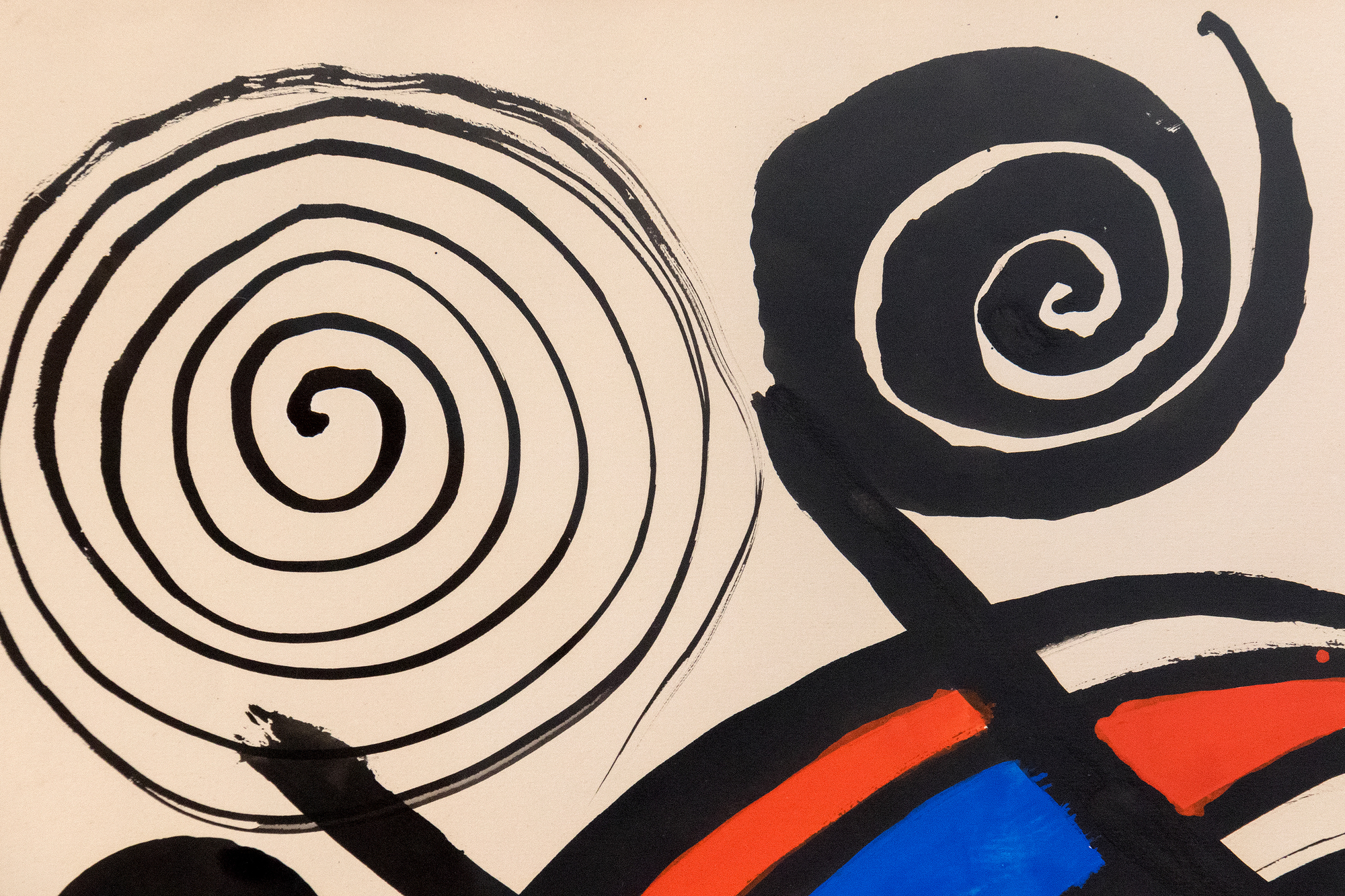
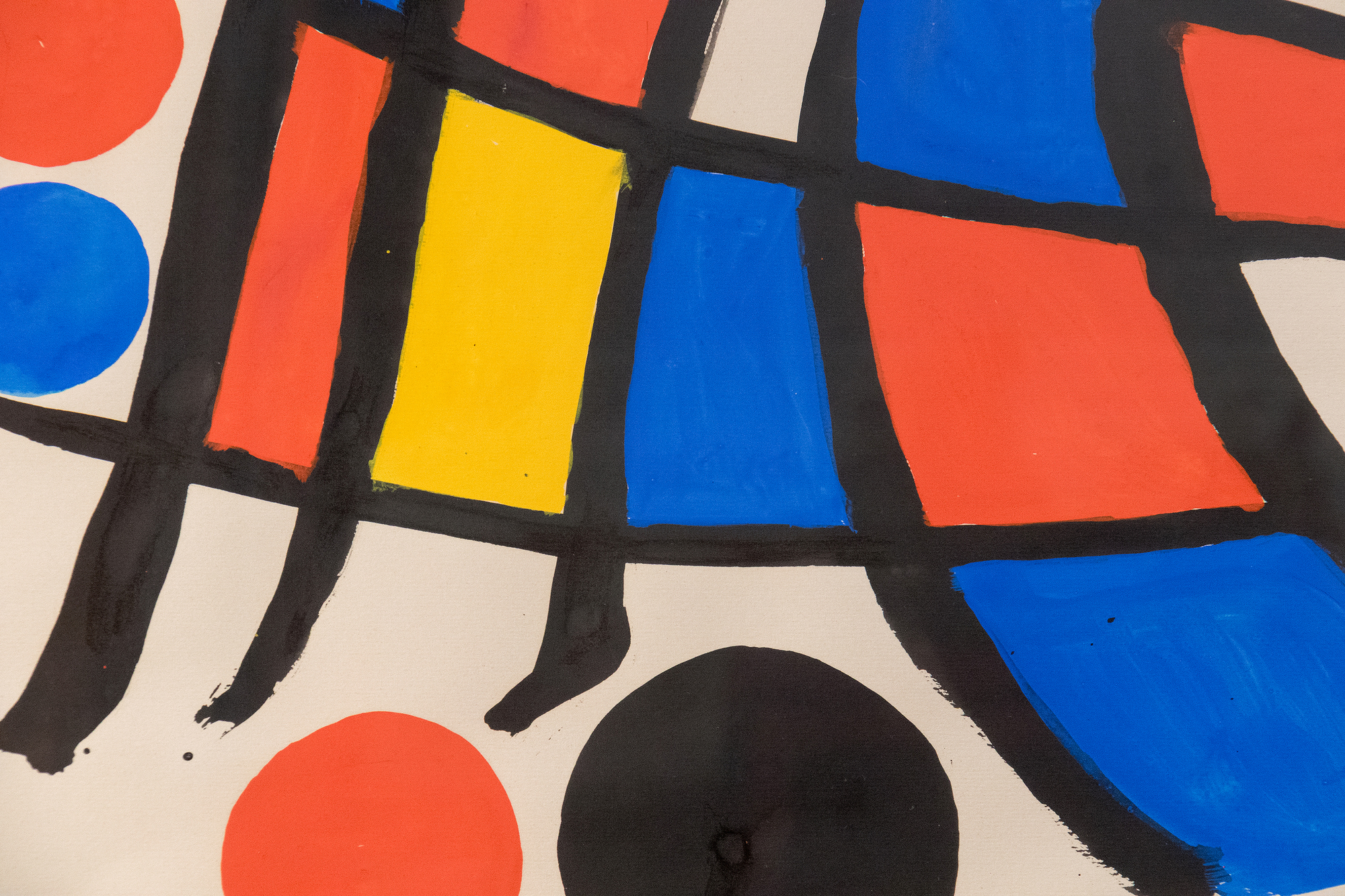
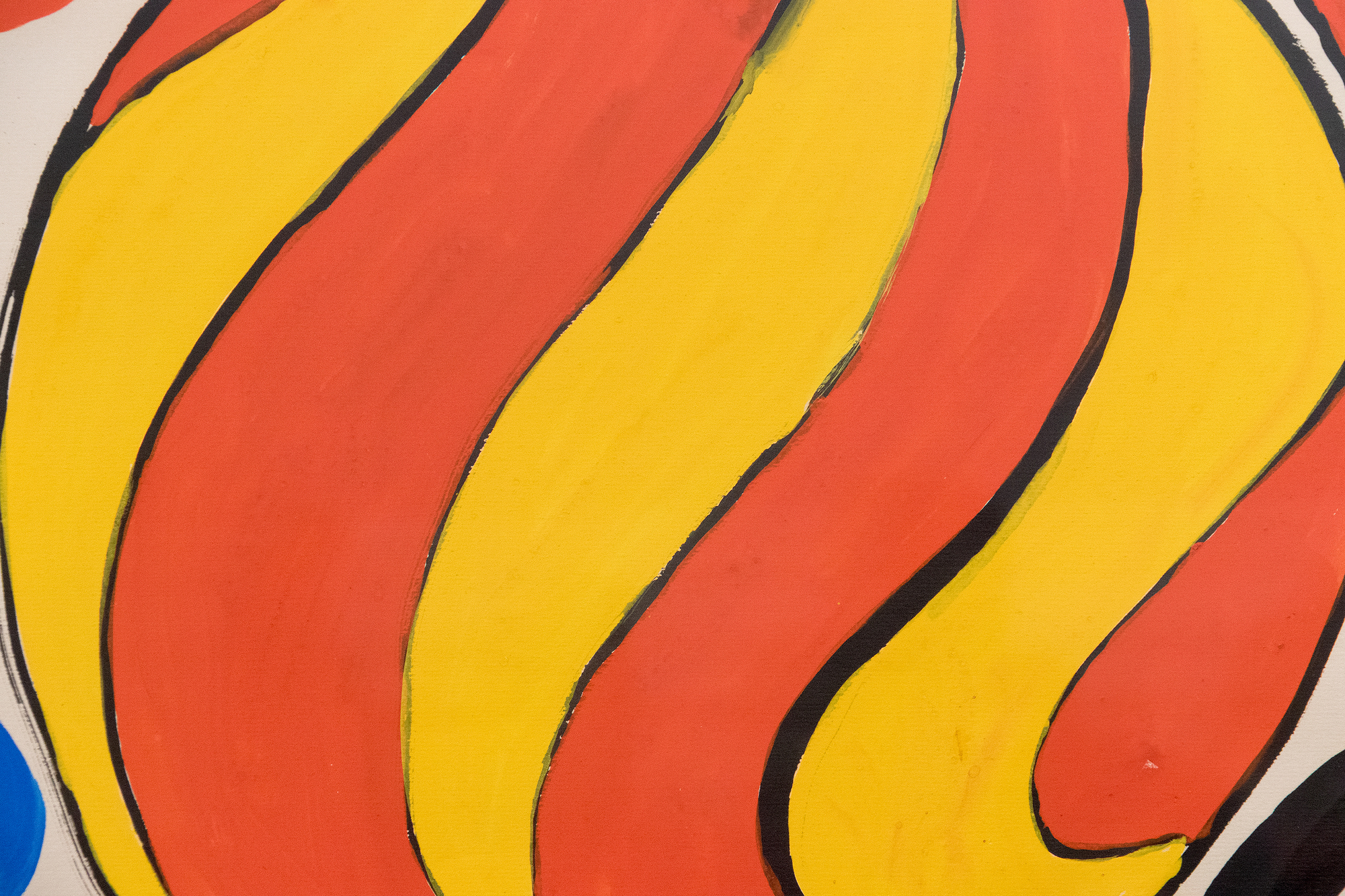
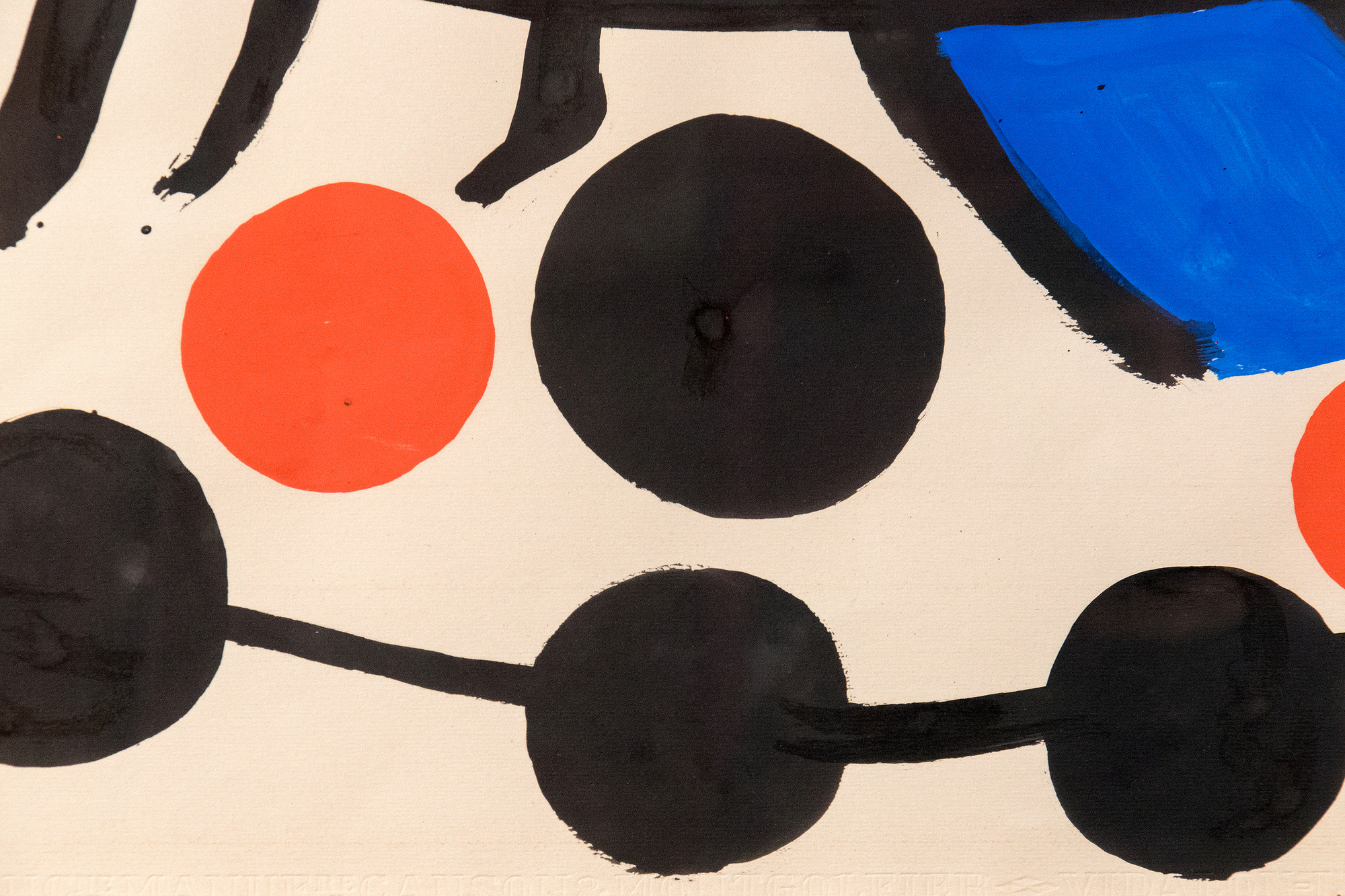
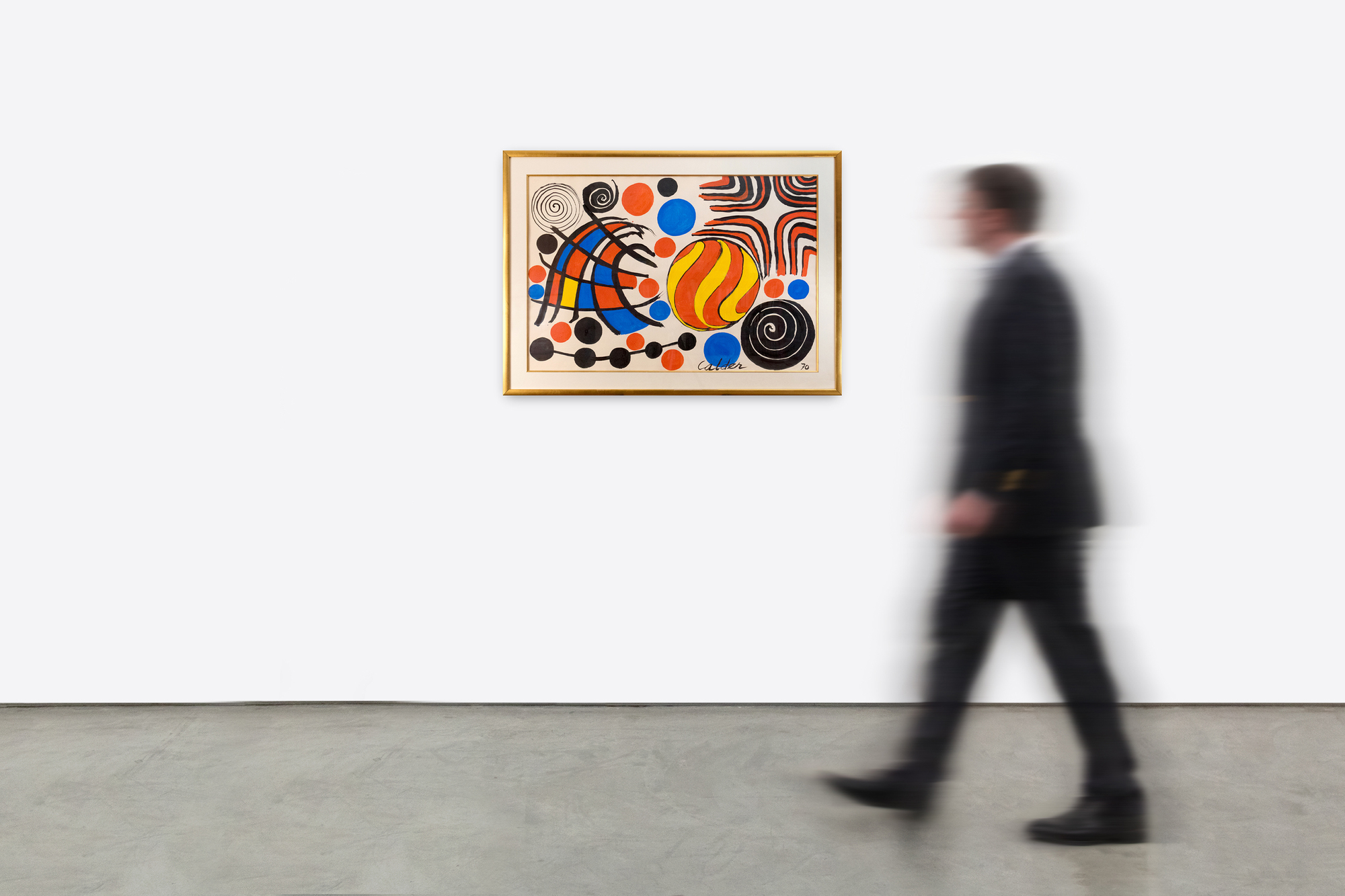
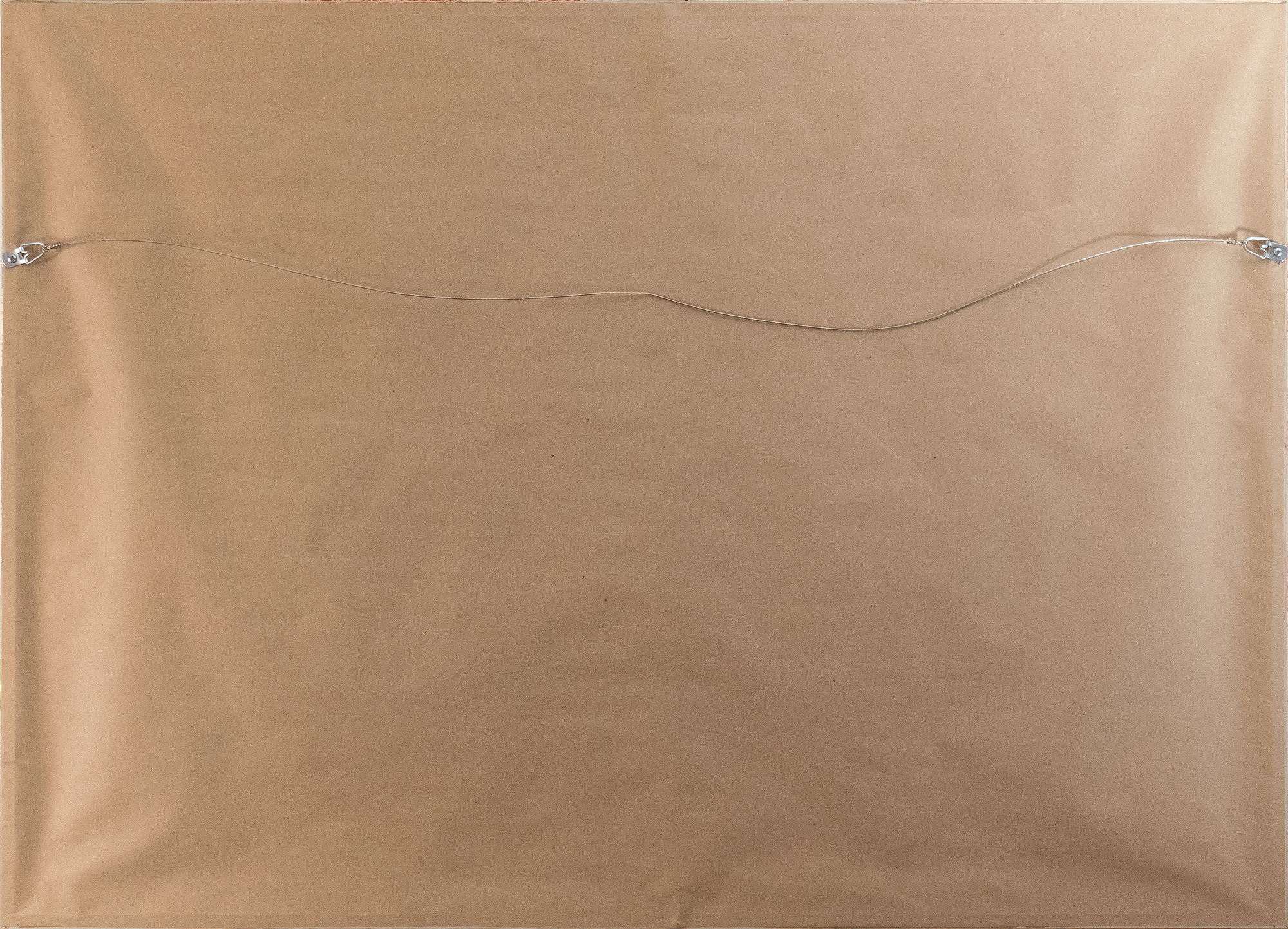
Provenance
Private CollectionPrice250,000
In this gouache from 1970, Calder employs a densely populated, diverse range of visual motifs. Large, bright red, blue, and black circles float among spirals and other abstract forms, while a central yellow orb, streaked with red, seems to radiate energy, suggesting movement or heat. To the left, a structure of intersecting lines and shapes introduces an architecturally restrained wave, while dynamic spirals animate the composition. The result is a celebratory display of Calder's signature elements—bold primary colors, geometric shapes, and flowing lines—each interacting in a lively, harmonious rhythm.


